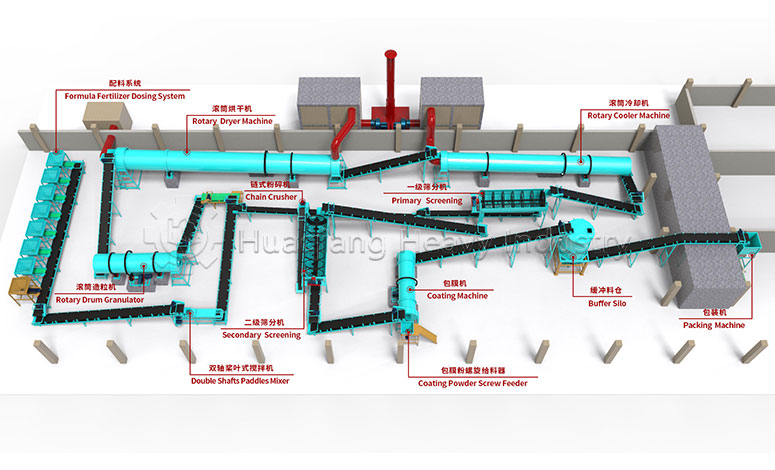“Fertilizer Manufacturing: From Raw Materials to Profits” encompasses the complete business journey of fertilizer production line, where “organic fertilizer production plant cost” represents one critical financial aspect of this process. The cost consideration directly impacts profitability calculations and determines equipment selection and operational scale.
Both concepts are fundamentally connected to “fertilizer manufacturing equipment” as these machines form the physical backbone of production. The equipment selection (crushers, mixers, granulators, dryers, etc.) significantly influences both the initial plant costs and long-term operational efficiency that ultimately determines profitability.
Running a successful fertilizer plant indeed requires balancing multiple factors – the equipment choices affect cost control versus product quality, as higher-end machines may have greater upfront costs but produce superior products. The manufacturing equipment also plays a pivotal role in achieving process efficiency while meeting environmental compliance standards, especially in organic fertilizer production where proper handling is crucial.
Ultimately, understanding the relationship between equipment capabilities, production costs, and market demands enables manufacturers to optimize their operations from raw material processing through to profitable sales, creating the balance described in the first statement.

The Wisdom of Raw Material Selection
Quality fertilizers begin with smart sourcing decisions:
- Nitrogen Sources: Urea, ammonium sulfate, ammonium chloride each have advantages depending on target crops and soil properties
- Phosphate Quality: Focus on water-soluble phosphorus ratio, the key indicator of plant availability
- Potassium Options: Potassium chloride is cost-effective but contains chlorine, while potassium sulfate suits chlorine-sensitive crops
- Micronutrients: Chelated micronutrients cost more but offer 3-5 times better absorption than ordinary salts
“Top-tier fertilizer plants don’t just mix ingredients—they create ‘nutrition solutions,’ understanding the specific needs of each crop at different growth stages, much like preparing meals for children of different ages.” — Senior Agrochem Expert
Core Considerations for Production Lines
✓Process Selection
Compound or blending? Tower granulation or drum granulation? Depends on product positioning and investment budget
✓Quality Control Points
Establish at least 7 key quality checkpoints from raw material intake to finished product
✓Energy Optimization
Drying processes typically consume 60% of plant energy—prime target for efficiency upgrades
✓Environmental Compliance
Dust collection, ammonia recovery, and wastewater treatment systems are essential
Three Pillars of Market Success
| Pillar | Key Actions | Common Mistakes |
| Product Differentiation | Develop specialized formulas (e.g., orchard-specific, greenhouse vegetable fertilizers) | Blindly copying big-brand formulas |
| Technical Service | Provide scientific application guidance to distributors and farmers | Selling products without usage education |
| Brand Building | Establish reputation through demonstration plots and efficacy comparisons | Over-reliance on price competition |


